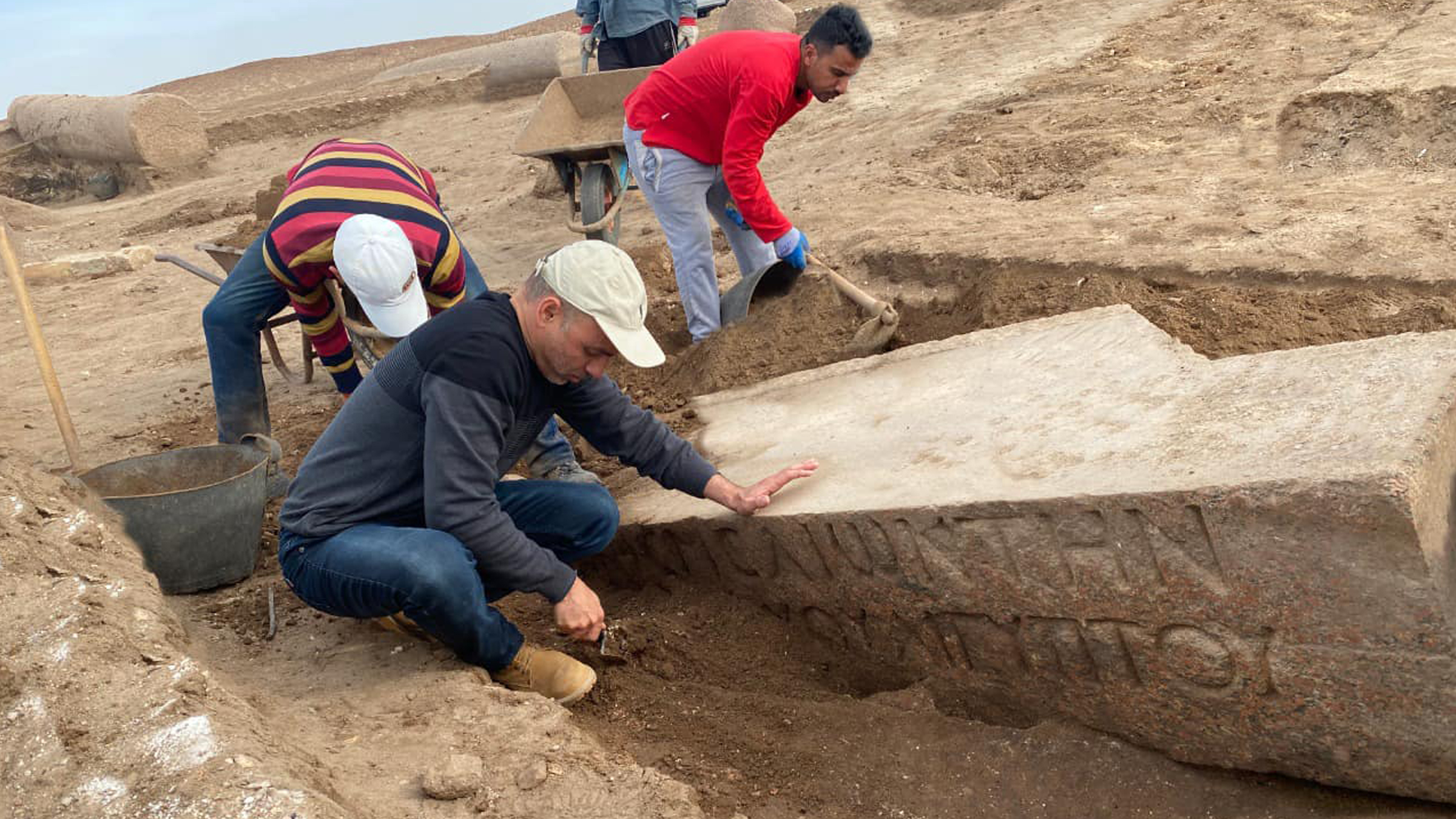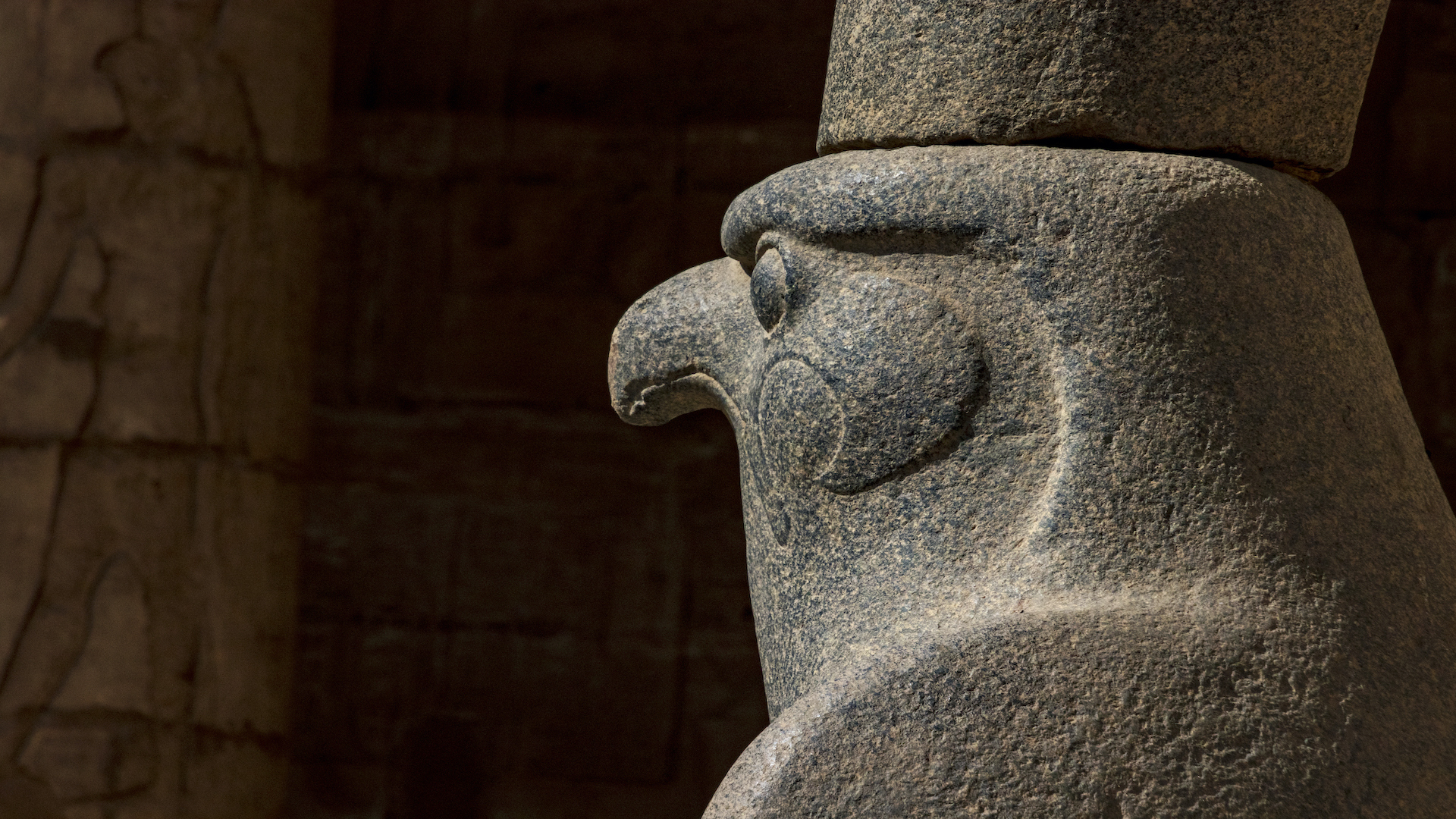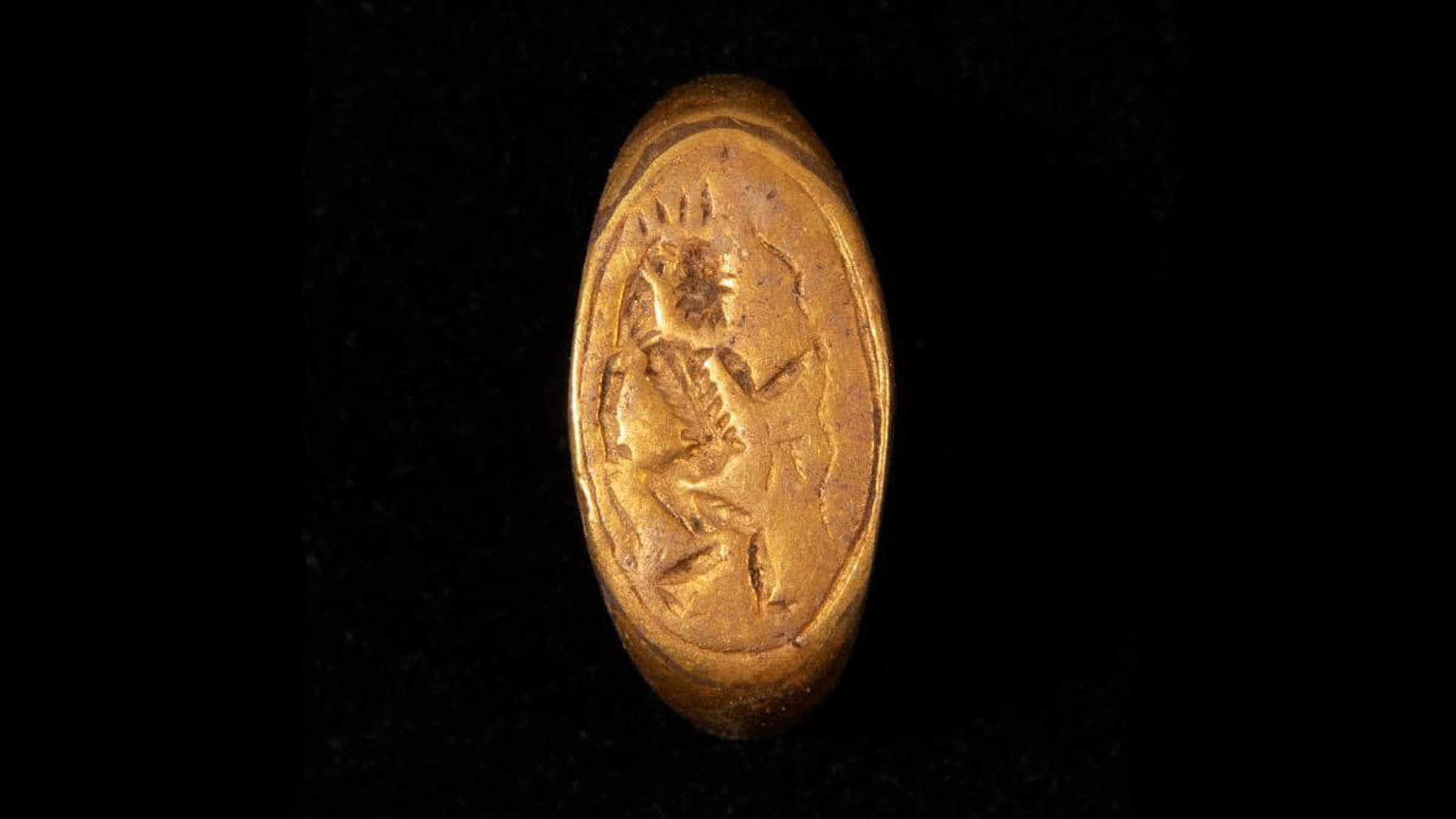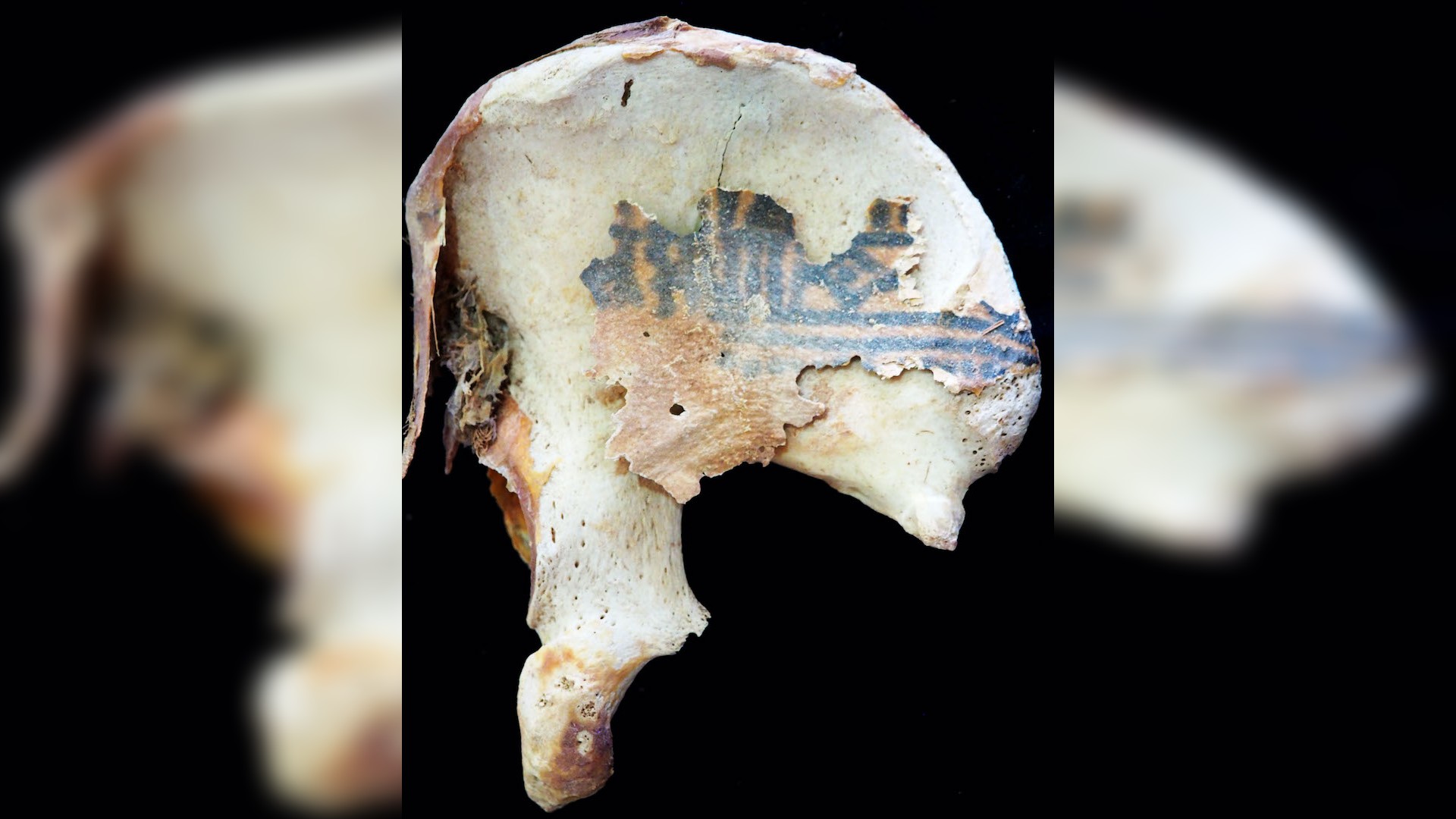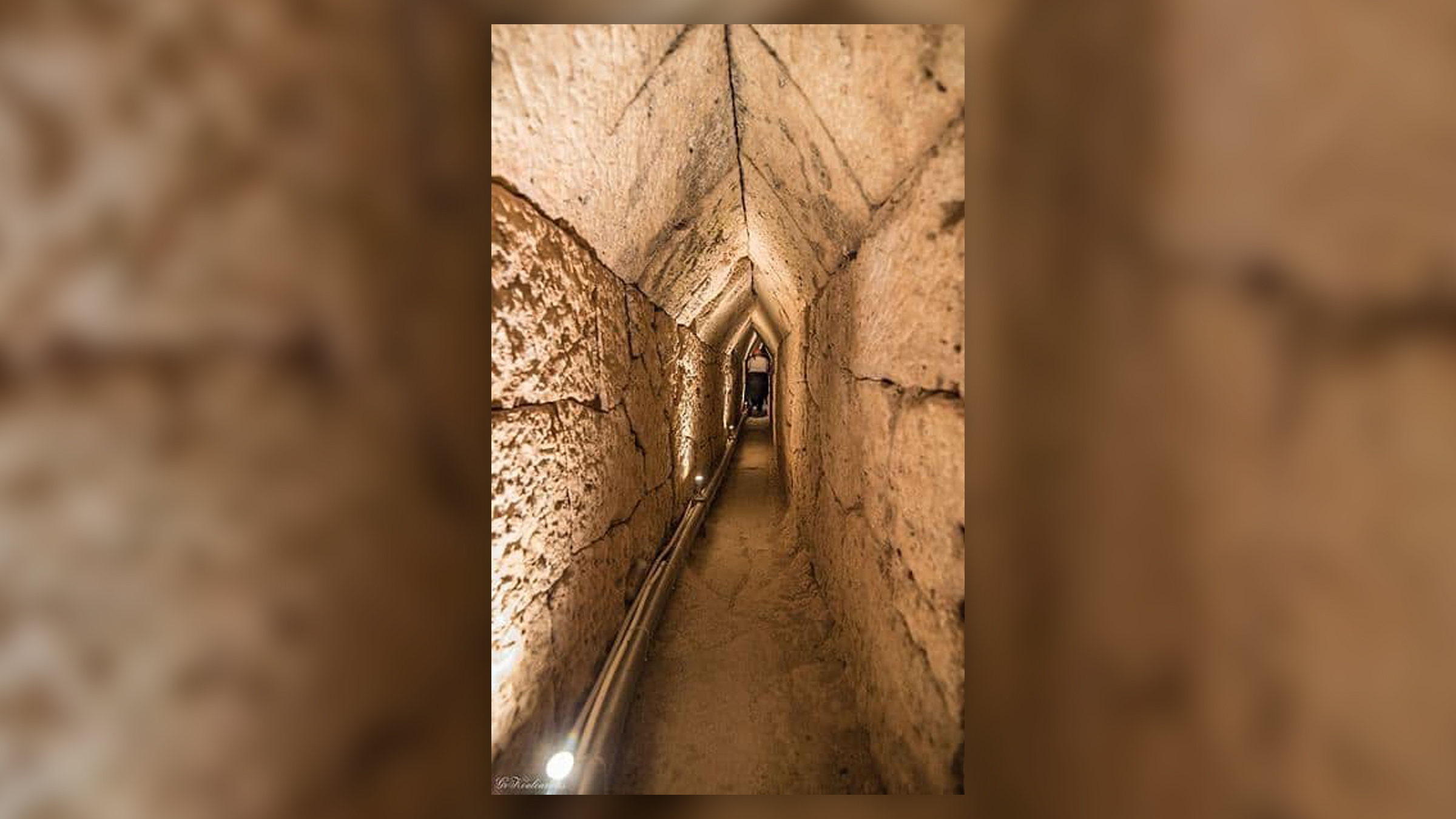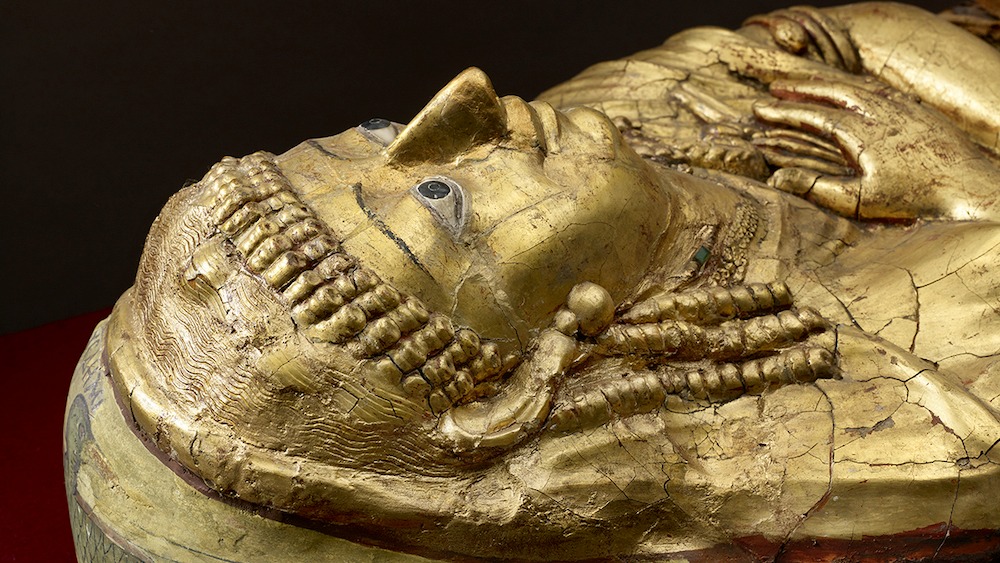10 times ancient Egyptian discoveries awed us in 2022
From mummies with gold-plated tongues to a pyramid built for a previously unknown queen, here are 10 spectacular discoveries about ancient Egypt from 2022.
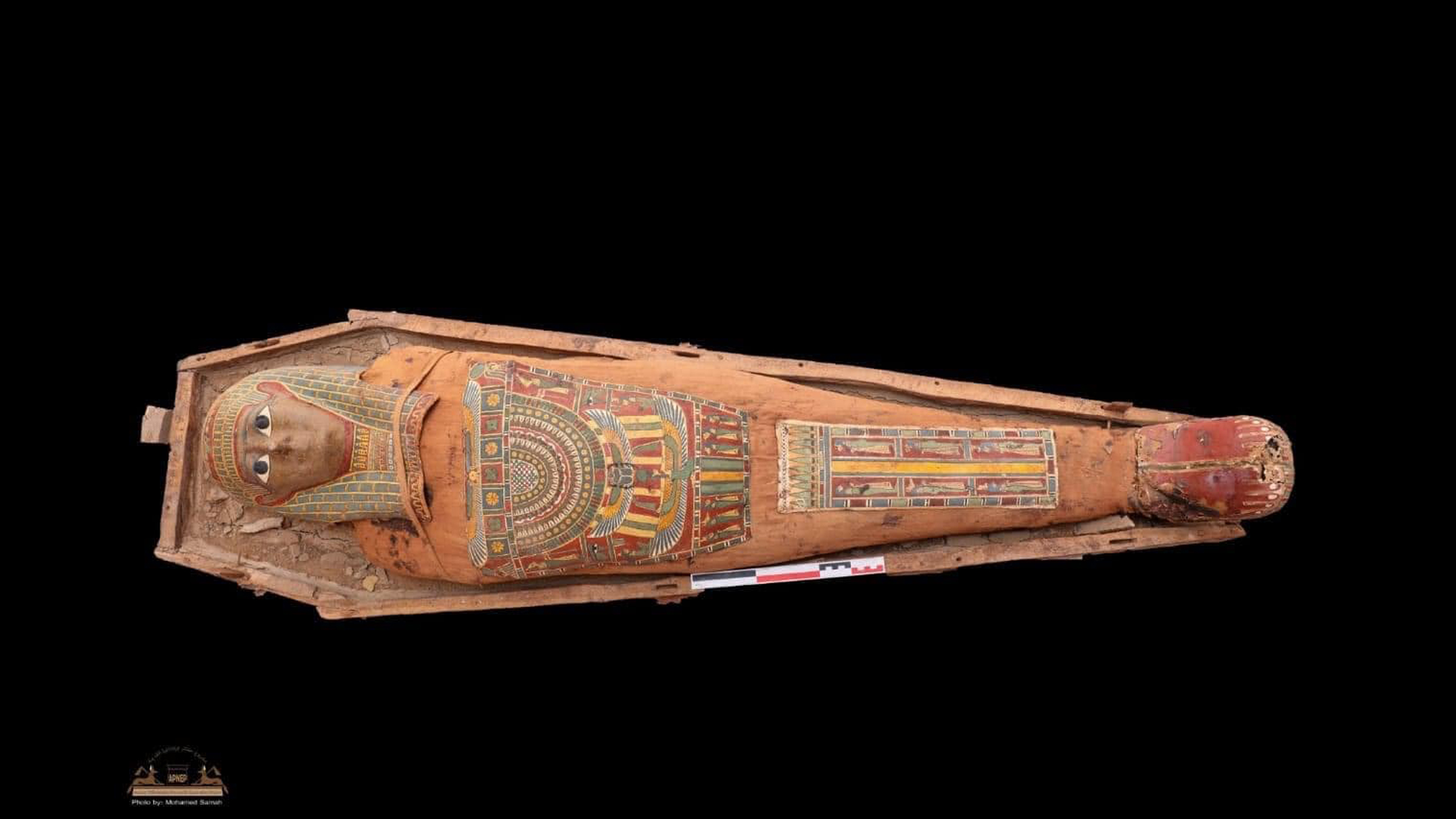
Ancient Egypt has many secrets to tell, and in 2022, archaeologists made some fascinating findings, including the tomb of a previously unknown queen, a falcon shrine with a cryptic message and a massive tunnel beneath a temple. Here are some of the most amazing discoveries at ancient Egyptian archaeological sites this year.
1. Lifelike mummy portraits
While excavating a necropolis in the ancient Egyptian city of Philadelphia, archaeologists unearthed two complete mummy portraits, as well as multiple incomplete portraits of people buried in the cemetery. Researchers think the deceased were likely middle class or elite, since back then it would've been costly to commission custom paintings of their likenesses. Because of looting, it's also incredibly rare for archaeologists to find mummy portraits, with the last recorded examples discovered in the 1880s.
2. Temple dedicated to the deity Zeus-Kasios
Archaeologists at the Tell el-Farama site on the Sinai Peninsula uncovered the remains of a temple dedicated to Zeus-Kasios, a deity who was a cross between Zeus and the weather god Kasios. Researchers discovered the temple after noticing sections of two pink granite columns poking out of the ground, which they believe once supported the temple's front gate and likely collapsed in ancient times during a massive earthquake.
3. Mummies with gold tongues
During the Greco-Roman period, it wasn't uncommon for mummies to be buried with gold tongues. Ancient Egyptians believed that doing so would help transform the deceased into divine beings in the afterlife. A team of archaeologists found several examples of this special burial practice at a dig site in an ancient cemetery near Quesna, just north of Cairo. The burials also contained a multitude of grave goods, such as necklaces, pottery and gold scarabs (beetles).
4. Falcon shrine and a cryptic message about boiling heads
Archaeologists stumbled upon a real head-scratcher after discovering a 1,700-year-old shrine featuring 15 headless falcons on a pedestal and a stone monument depicting two unknown gods in Berenike, a port on the Red Sea. Found next to the pedestal was an iron harpoon, but what really dumbfounded researchers was the inscription in Greek they spotted in one of the shrine's back rooms, which read, "It is improper to boil a head in here."
5. Gold ring featuring the likeness of the "god of fun"
Here's further proof that even ancient Egyptians liked to have a good time. While exploring a burial site in Akhetaten (modern-day Amarna), a city south of Cairo, archaeologists found a treasure trove of gold artifacts, including a necklace and three rings. One piece of jewelry stood out for its engraving of Bes, also known as the "god of fun." Ancient images of the fun-loving deity can be found throughout Egypt. He is often depicted as a dwarf who not only enjoyed playing music and partying but also protected women during childbirth.
6. Protective childbirth tattoos
Before giving birth, some ancient Egyptian women would get tattoos as a form of protection during childbirth. Archaeologists discovered six examples of this practice while studying mummies buried at Deir el-Medina, an archaeological site located along the banks of the Nile River. Finding ancient tattoos is a rarity, since the skin would need to be preserved and archaeologists make it a practice to not unwrap mummies. However, in this case, portions of the bodies were exposed, including the lower back of a woman whose ancient ink included black lines and a depiction of Bes, a deity that protected women during childbirth.
Get the world’s most fascinating discoveries delivered straight to your inbox.
7. Vast water tunnel
Archaeologists discovered a 4,281-foot-long (1,305 meters) tunnel beneath a temple in Taposiris Magna, an ancient city located west of Alexandria, Egypt. It's thought that, at one time, the massive tunnel was used to transport water to citizens and is an exact replica of the Eupalinos Tunnel on the Greek island of Samos, which is considered an engineering marvel.
8. Birds in an Egyptian "masterpiece"
A painting containing birds both in flight and perched next to a marsh is so detailed that modern-day researchers used a copy of it to name the exact species painted on the 3,300-year-old artwork. Archaeologists found the "masterpiece" a century ago on the walls of a palace at the ancient Egyptian capital of Amarna, but it wasn't until recently that researchers identified the species depicted in the work, including a pied kingfisher (Ceryle rudis), a red-backed shrike (Lanius collurio) and a white wagtail (Motacilla alba).
9. New understanding of mummification
Archaeologists completely flipped the script on what's taught in school about mummification. Ancient Egyptians used the burial practice not to preserve the bodies of the deceased but as a way to guide them toward divinity. The new understanding, which archaeologists call "a complete 180," is the focus of an exhibition called "Golden Mummies of Egypt," which opens in early 2023 at the University of Manchester's Manchester Museum in England.
10. Tomb of an unknown queen
On the 100th anniversary of the discovery of King Tut's tomb, a group of archaeologists unearthed the tomb of a previously unknown royal: Queen Neith. The discovery was made at Saqqara, an archaeological site in Giza, and is the first recorded mention of her in the archaeological record. In addition to the tomb, researchers found numerous coffins and mummies, some of which belonged to King Tut's closest generals and advisers.
Jennifer Nalewicki is former Live Science staff writer and Salt Lake City-based journalist whose work has been featured in The New York Times, Smithsonian Magazine, Scientific American, Popular Mechanics and more. She covers several science topics from planet Earth to paleontology and archaeology to health and culture. Prior to freelancing, Jennifer held an Editor role at Time Inc. Jennifer has a bachelor's degree in Journalism from The University of Texas at Austin.



